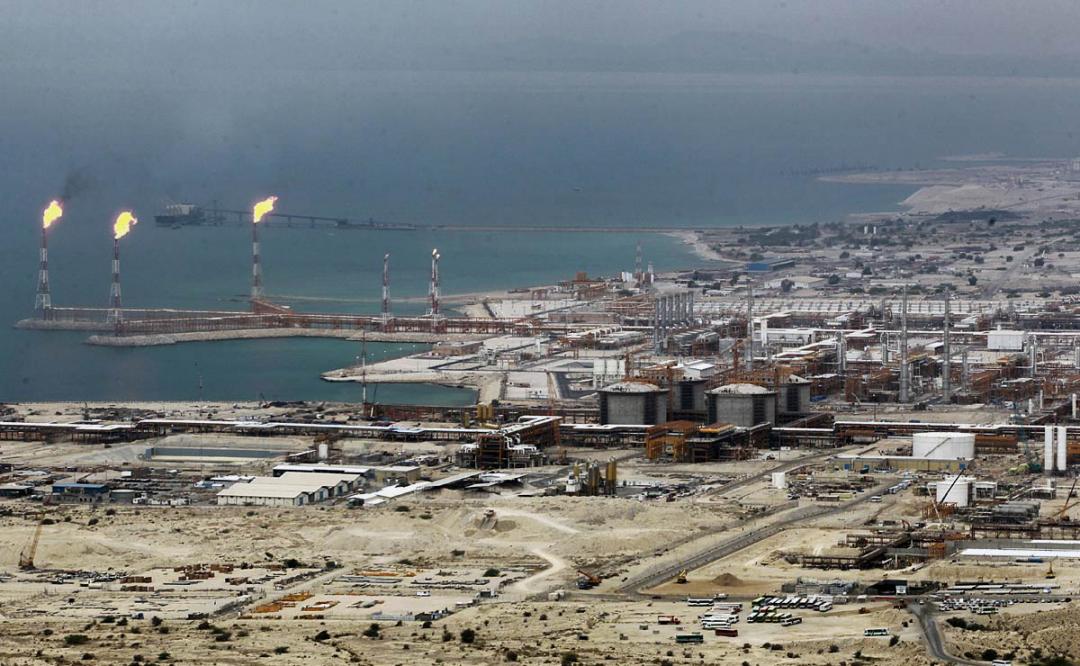Liquefied natural gas can help strengthen Iran's position in global energy markets but the country lacks the necessary export infrastructure to achieve its targets. Moreover, LNG development projects had been halted over the past years, IRNA reported Saturday.
The Oil Ministry is now working towards LNG exports in addition to the current contracts which provide for export of natural gas via pipelines, Alireza Kameli, managing director of the National Iranian Gas Export Company, said.
Three projects, namely Persian LNG, Iran LNG and Pars LNG, were earmarked to that end. However, Pars and Persian LNG projects were put on hold because of the sanctions imposed on Iran, he said. Iran LNG Project has made a 50% progress and is awaiting lifting of the punitive sanctions to be able to import machinery and equipment necessary to move the projects forward.
LNG accounts for 31% of the global gas trade, of which 70% is carried out in Asia and the Middle East. There are currently 60 LNG receiving terminals in Asia with 40 others due for construction in the near future.
"The LNG industry provides the means of entry to further markets, access to which wouldn't be feasible through pipelines, Kameli said, adding that Iran is in negotiations with the world's biggest LNG company dealing also with floating liquefied natural gas , Kameli said without providing details.
FLNG refers to water-based LNG operations employing technologies designed to enable the development of offshore natural gas resources. Floating above an offshore natural gas field, the FLNG facility will theoretically produce, liquefy, store and transfer LNG (and potentially LPG and condensate) at sea before carriers ship it directly to markets.
"Hopefully, the assessment and operational phases for the FLNG project will commence shortly after the sanctions are terminated so that Iran could have access to such capability and start LNG export at the time of peak production in 2-3 years," the official said.
Eyeing Far East
The Oil Ministry is also planning to export natural gas via onshore and offshore pipelines to Oman, from which point it can be liquefied and exported to other countries. Through its Omani partnership, Iran could ship the commodity to lucrative Far Eastern markets—currently the main destination of Omani LNG tankers. A final agreement is yet to be signed with the neighboring Persian Gulf emirate and laying a pipeline would take at least 3 years.
Iran LNG is a plant under development at Tombak Port, approximately 50 kilometers north of Assaluyeh Port and 15 km southeast of Kangan. Construction of the LNG plant started in 2007. It includes two LNG trains each with capacity of 5.4 million tons of LNG per annum, earning the country more than $7 billion annually.
The capital investment needed for the Iran LNG plant is estimated at $5 billion and the facility would start early production if half that sum is made available. Iran LNG Company filed a lawsuit with an international tribunal against the EU in March 2014 for its ban on selling LNG plant equipment to Iran.
Iran holds the world’s second biggest natural gas reserves after Russia, and the fourth-largest known oil reserves. It is home to 17% of the world's proven natural gas reserves and more than one-third of OPEC reserves.
The world's largest natural gas field, South Pars, is shared between Iran and Qatar and is estimated to hold roughly 40% of Iran's gas reserves. Qatar is currently the biggest LNG producer in the Middle East and ships 77 million tons of the fuel per annum.
Iran and six world powers (Britain, China, France, Russia, the US plus Germany) are trying to meet a self-imposed deadline of the end of June to resolve the nuclear standoff over Tehran's nuclear work, which the West fears is aimed at developing a weapons capability - a charge Iran denies, saying it is for peaceful purposes.


